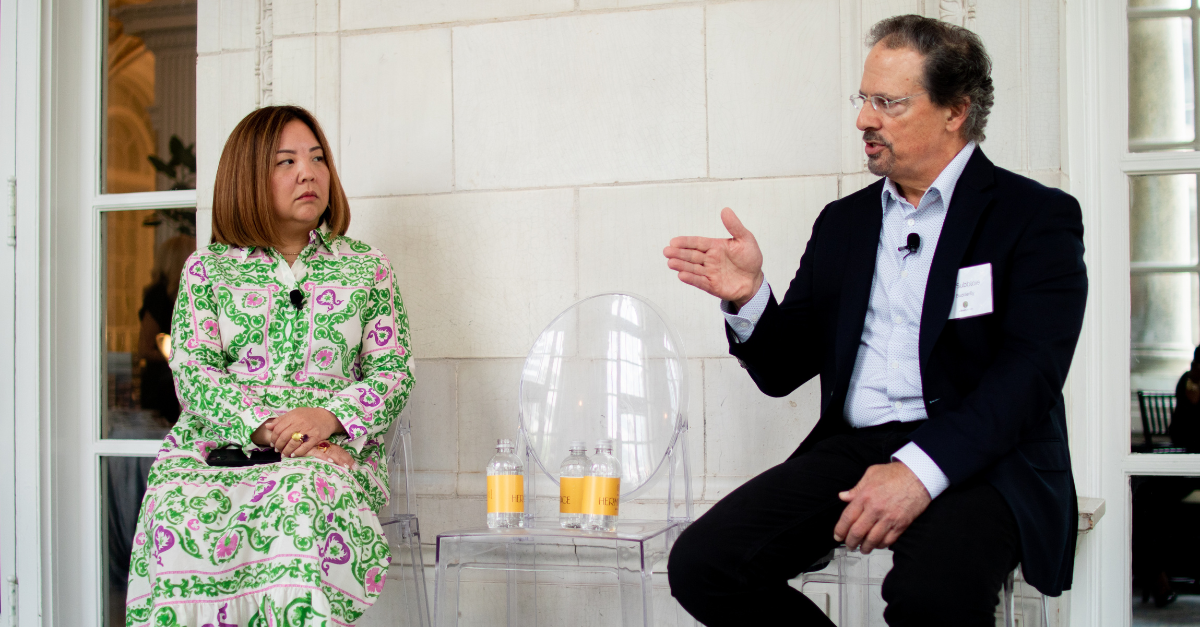One particularly impactful session featured two seasoned CEOs from the Edison portfolio in a panel discussion titled “Think Like an Investor.” Edison believes if we think more like an operator, it will enable more effective value creation for our portfolio companies. Likewise, our most successful CEOs have found if they intentionally think like an investor, it has the potential to lead to more fruitful outcomes. In this panel, Edison Partner Casey Myers engaged with Al Subbloie (CEO, Budderfly; with four successful exits as Edison CEO and board director) and Amy Kadomatsu (former CEO, Comply) around the importance of CEOs adopting an investor’s perspective to enhance value creation, alignment, and returns. Here are five key takeaways that stemmed from the discussion:
1. In any company-investor partnership, alignment is key.
Amy put it plainly: “Everybody has a different perspective on what they want out of the investment.” This is why it is crucial to foster alignment early in the process. Contrary to what you might believe, due diligence isn’t just the onus of the investor. As Al pointed out, CEOs must also seek to understand fund dynamics, expectations at each stage in the life cycle, and the like.
It is particularly important for CEOs and investors to maintain alignment on the fundamental value creation model throughout the investment lifecycle, so as to ensure that everyone is aiming towards the same “North Star.” Misalignment in this area can lead to unnecessary work, internal churn, and misallocation of precious CEO time and company resources.
2. Positive board dynamics matter for everyone.One way to foster alignment and reduce unnecessary friction is to intentionally promote a productive, positive dynamic within your board. At the root of this is effective communication; in most cases, engaging with board members only once per quarter simply doesn’t cut it. Al suggests meeting with board members (either individually or in committee groups) monthly, keeping everyone connected to what is happening in every area of the business and preemptively addressing any issues that may arise.
Additionally, as Amy put it, it’s important not to “gatekeep” your ELT from your board. Remember that they have these leadership positions for a reason and, ideally, should be able to function as extensions of you. Granting your ELT exposure to the board can lead to greater alignment overall, but requires that your entire C-suite begin to think like investors.
3. Transparency is the best policy.
“If you think your company doesn’t know what’s going on, you’re kidding yourself.” Both Al and Amy believe in having transparent communication with their boards and their teams, leveraging KPIs and other data to tell how the company is doing. This serves a few purposes; for one, it allows the board to feel more engaged and thus able to respond more proactively rather than reactively. It builds trust on all fronts, facilitating a more honest and effective working relationship and creating a sense of shared responsibility for problem-solving. Perhaps most importantly, transparency leads to alignment, ensuring that everyone both understands the impact of their role and is working towards common objectives.
4. (The right) people over everything.
Thinking like an investor often means making tough decisions about the people involved with your company – those on your board, in your executive leadership team, and even the person in your seat!
The people who got your company to one stage of growth may not be the same ones to get it to the next. That’s why, as Al said, CEOs must learn to “balance loyalty and performance.” As Amy stated, conducting regular team assessments (using the 9-box grid or some other framework) can help you make difficult decisions when necessary to ensure the right team composition for future growth.
Similarly, it’s critical to make sure those on your board have the right skill sets and proficiencies needed to take your company to the next level. “Governance is crucial to the success of the firm... it’s not about you, it’s about the company.”
Prioritizing the right people even extends to which investor you choose to partner with. Beyond the size of the check, it’s important to consider an investment partner’s culture, intellectual capital, and people before you sign a deal.
5. Mistakes are opportunities to grow.
Throughout the discussion, Al often referenced challenging times or ‘war stories’ he has experienced over the years as a CEO. Amy had her own fair share of trials as well. What this teaches us is that no investment lifecycle is always “up and to the right.” CEOs are bound to make mistakes – keeping the wrong people in their seats for too long, underutilizing the board, micromanaging their ELT, etc. The key is to use the learnings from these missteps to make better strategic decisions down the line. Putting yourself in the shoes of an investor can help you see the bigger picture and ultimately reach your end goal more efficiently.


